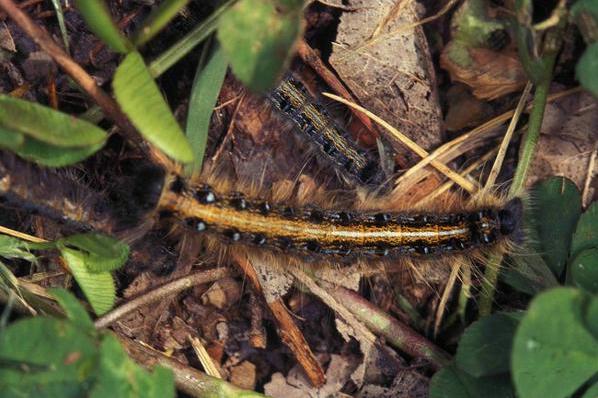Eastern Tent Caterpillar
go.ncsu.edu/readext?787375
en Español / em Português
El inglés es el idioma de control de esta página. En la medida en que haya algún conflicto entre la traducción al inglés y la traducción, el inglés prevalece.
Al hacer clic en el enlace de traducción se activa un servicio de traducción gratuito para convertir la página al español. Al igual que con cualquier traducción por Internet, la conversión no es sensible al contexto y puede que no traduzca el texto en su significado original. NC State Extension no garantiza la exactitud del texto traducido. Por favor, tenga en cuenta que algunas aplicaciones y/o servicios pueden no funcionar como se espera cuando se traducen.
Português
Inglês é o idioma de controle desta página. Na medida que haja algum conflito entre o texto original em Inglês e a tradução, o Inglês prevalece.
Ao clicar no link de tradução, um serviço gratuito de tradução será ativado para converter a página para o Português. Como em qualquer tradução pela internet, a conversão não é sensivel ao contexto e pode não ocorrer a tradução para o significado orginal. O serviço de Extensão da Carolina do Norte (NC State Extension) não garante a exatidão do texto traduzido. Por favor, observe que algumas funções ou serviços podem não funcionar como esperado após a tradução.
English
English is the controlling language of this page. To the extent there is any conflict between the English text and the translation, English controls.
Clicking on the translation link activates a free translation service to convert the page to Spanish. As with any Internet translation, the conversion is not context-sensitive and may not translate the text to its original meaning. NC State Extension does not guarantee the accuracy of the translated text. Please note that some applications and/or services may not function as expected when translated.
Collapse ▲
Eastern tent caterpillars looking for a place to spin their cocoons and pupate. Photo by J. R. Baker
Eastern Tent Caterpillars hatch about the same time as our native tree the Eastern Redbud starts to bloom. This insect overwinters in egg masses attached to the twigs of host trees, with wild cherry being one of its favorites. The caterpillars hatch in spring when the new leaves are opening on the trees.
After a few days of feeding, the caterpillars begin to weave communal tents in the crotches of trees, enlarging the tents as they grow. In large numbers they can defoliate a large portion of a tree or even the entire tree. This can weaken the tree, but rarely kills it.
The caterpillars will feed for about six weeks, then will leave the host tree in search of a place to pupate. The mature caterpillars are easy to identify: they are about 2” inches long, black and slightly hairy with a pale-yellow stripe down the back that has a row of clear blue spots along each side. They like tree trunks, fences, or your patio furniture. You may see silky, off-white colored cocoons stuck in the mortar between the bricks on your house. If you have large numbers of these caterpillars it can be very annoying when they are crawling all over the place. Thankfully this only lasts a few days!
The adult moths will hatch from the cocoons after a few weeks. They emerge at night, so often go unnoticed. The adults fly back to the trees, where they mate and the female lays eggs for the following year. The eggs masses are attached to and encircle small twigs, and are black and somewhat shiny.
What’s the best method to control these pests? As soon as you see the small tents, go out late in the evening or on a rainy day, tear them out and discard them in a bucket of liquid dish washing solution. If the nests cannot be safely reached from the ground, you can use an organic control called Bt. Bt is short for Bacillus thuringiensis, a biological pesticide that contains a bacterium that will kill young, leaf eating caterpillars without killing other beneficial insects or honey bees. You must spray the leaves of the plant as the insecticide must be ingested. Spray when the caterpillars are small because they become increasingly tolerant to insecticides as they mature. Always read and follow the label directions when using any pesticide.




